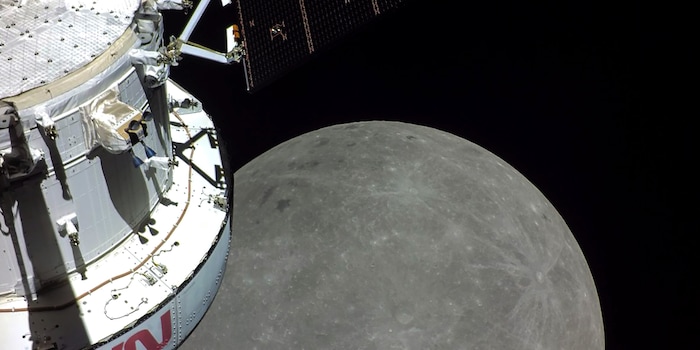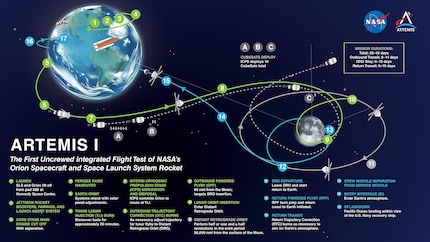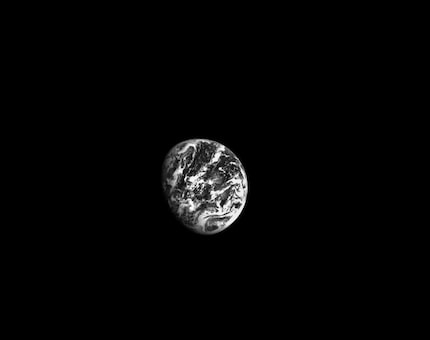
NASA: Only 129 kilometres past the moon
On the sixth day of NASA's Artemis I lunar mission, the Orion spacecraft passes behind the moon. A first manoeuvre to reach orbit later. The shortest distance to the satellite is only 129 kilometres.
The Orion capsule of NASA's Artemis I mission has been underway for just under a week. NASA launched the Space Launch System rocket on 16 November, which successfully carried the capsule into space. Now it has already arrived at the Moon and is gaining momentum in a first flyby manoeuvre. At the end of this week, it is expected to reach orbit around the satellite in a second manoeuvre. Artemis I is one of two preparatory missions. NASA's goal is to put the first woman and the first person of colour on the moon in 2025. After that, the space agency wants to establish a long-term presence on the satellite.

Source: NASA
During the journey towards the moon, the capsule not only took various pictures of the Earth, but also planned trajectory corrections. It also deployed ten small satellites called CubeSats. These have various missions, such as to explore the ice on the moon. The CubeSats will complete their experiments on different schedules independent of the main mission. However, after the launch, NASA noticed that one of the satellites was defective. The one that should have landed on the moon. Thus, there will be no touchdown of a NASA satellite on the satellite this year.

Source: NASA
On Sunday, the Orion spacecraft entered the Moon's sphere of influence, replacing Earth as the main gravitational force. One day later, on Monday, the time had come. The first manoeuvre behind the moon was allowed to begin. And it was successful. Orion was 370,000 kilometres away from its home.
The Orbital Manoeuvring System engine fired for two and a half minutes to accelerate the spacecraft during the so-called "Outbound Powered Flyby". During the manoeuvre, radio communication was intermittently lost because the capsule was behind the moon. The shortest distance to the moon during the flyby was only 129 kilometres. The speed increased from 3425 to 8211 kilometres per hour as a result of the manoeuvre.
Titelbild: NASAI find my muse in everything. When I don’t, I draw inspiration from daydreaming. After all, if you dream, you don’t sleep through life.
From the latest iPhone to the return of 80s fashion. The editorial team will help you make sense of it all.
Show all